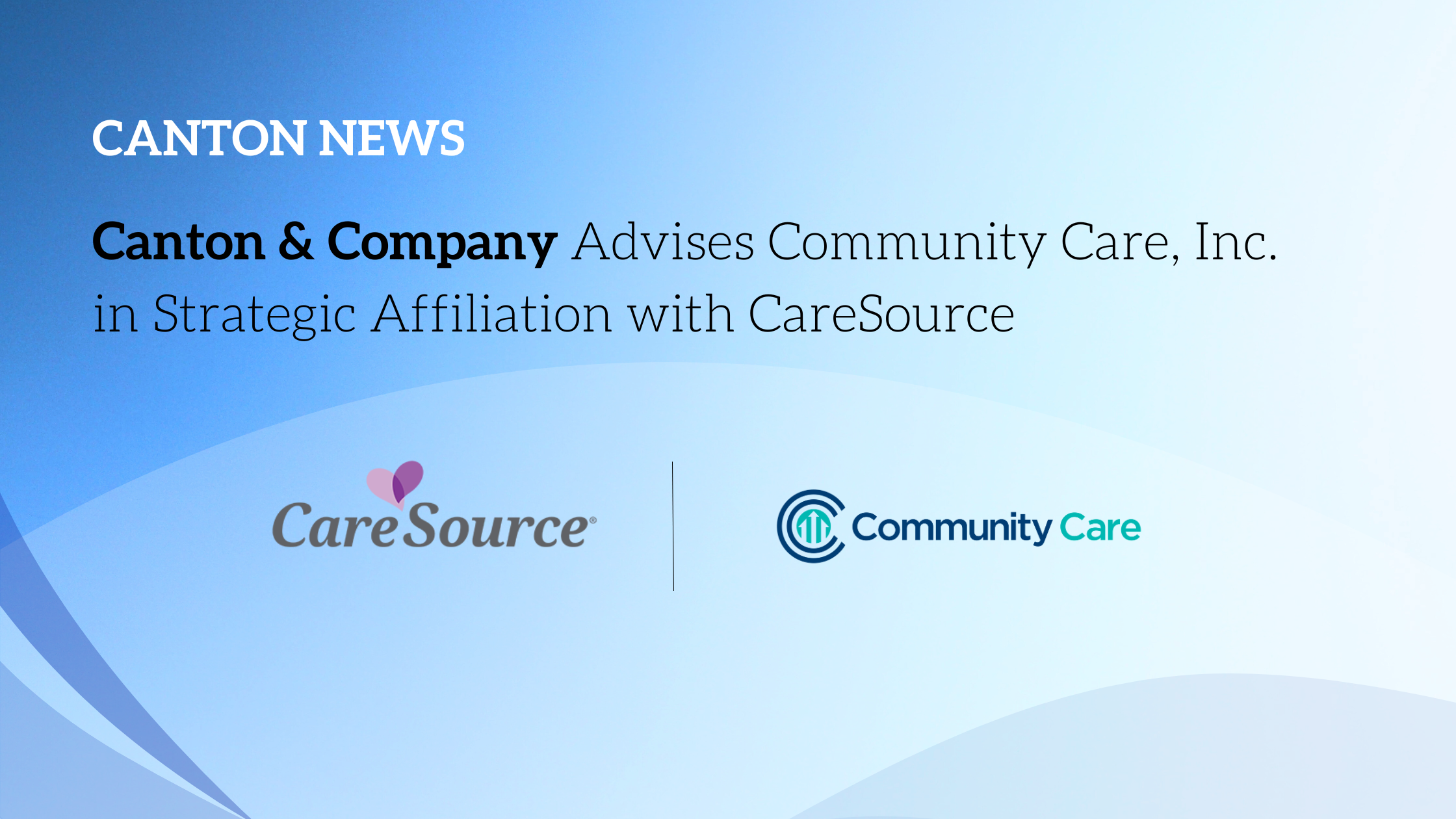By: Don McDaniel
True in any market: Growth requires rigor, discipline, focus and accountability.
We are on an exciting trajectory as a firm, working with great, mission-focused companies with many innovative new approaches. Of particular interest to us is the work we are doing with technology and tech-enabled services firms, including tech-enabled providers and payers leveraging data, analytics, AI, and other tools in a desire to create more fruitful, meaningful customer experiences.
As our work evolves, we are learning more and more about what is required to build and execute on sustainable growth. Lots of this learning may startle or dismay, especially if you are an investor or a board member of the affected companies. We have found that the most consistent performance gap suffered by our clients, many postured for growth and well-funded, is a lack of coherent, consistent revenue growth. They have trouble selling consistently, and in some cases, have trouble renewing with customers, resulting in high churn-rates. This pervasive lack of growth mastery is alarming. Many firms have received funding explicitly to build growth capacity, and so this hits like a ton of bricks when owners, leaders and stakeholders wake up to the reality that sales results are not responding to various activities being pursued.
There are many reasons for this widespread deficit, but one we consistently uncover is the lack of a focused, rigorous, accountable go-to-market plan. Many companies, once high-flyers and drinking their own Kool-Aid, had early success leveraging key contacts, “Rolodex Roulette,” and find that such prospecting is not sustainable; even the most connected in the business run out of juice at some point. As an aside, if you examine companies that suffer from high levels of churn, and poor product-market fit, you shouldn’t be surprised to find these same companies are the ones that relied of the cult of personality of a founder or Board industry luminary to generate early sales – and yes, some sales are relationship based, but many of those sales don’t survive the renewal, driving the churn.
From Scrappy Start-ups to Systematic Growth
Another pattern we see, is entrepreneurs that founded scrappy start-ups, in which “everyone sold,” but as the company matures, and the sales targets grow to represent “real money,” they find they lack the foundational infrastructure to sustain systematic growth.
So, given what we’ve observed and learned, we’ve come to rely on our proprietary approach to go-to-market for our healthcare clients. The piece-parts of our approach aren’t necessarily proprietary, and we never stop learning and evolving the model, but we believe the totality of the approach, when adopted with fervor, can generate out-size results. People talk all the time about how they are unique or different, so I will leave that commentary to others. What I can share, based on our experience, are the elements that are critical to the success of our approach. We find ourselves wearing multiple hats in working with growth teams – at times we are a tutor, mentor or teacher, other times we are a part of the client’s team playing a role on their growth drive train, and increasingly we are stepping in, short- and long-term to manage a key function or department. As a consulting firm that aspires to be an operator, we always feel we are best when we are fully scrubbed in, maybe on the bench cheering and ready to help, or we’re on the court as a key part of the attack.
Building a Sustainable Account-Based Marketing Growth Engine
Given the relative unanimity of the challenges we’ve encountered among clients challenged to build a growth engine, we’ve adjusted and refined our thinking about the best way to organize and execute high-performing, results-driven sales and marketing activities. We’ve learned a lot that informs our thinking now, such as:
- Sales and marketing need to be completely integrated. A marketing team that doesn’t count “driving sales” as its first 10 priorities doesn’t have a place in a high-growth business. I hate to be offensive, but marketing’s only reason for existence is to produce sales, period. As such, our bias is to have sales and marketing report to the same executive leader – there should be little or no “green space” between them. Regardless, we always ensure there is no confusion between the two symbiotic functions.
- Individual salespeople may be bad hires, but when good salespeople don’t succeed, or moreover, lots of salespeople don’t succeed at the same time, the problem is generally not the salespeople but the system – or maybe the sales leader, or both!
- Most organizations lack a singular, focused, unifying GTM thesis that drives all they do. This puts a lot of pressure on identifying the right thesis, but we have seen organizations that bring magnificent execution on all levels to a mediocre thesis, and they sell – execution tied to a flywheel plan trumps everything else. We often find these same companies suffer from massive awareness gaps, but it's expensive to build awareness broadly. We choose to concentrate our brand-building efforts (and resources) on your “in-house” strategic thinkers, voices, and thought leaders. We find this to have the biggest, most efficient, impact on potential buyers.
- Those with the smartest leaders/founders/board/advisors are often the ones who don’t feel they need to ask the market – their prospective customers, what they need and how they wish to consume the support. It continues to blow my mind the number of businesses I’ve personally encountered that have raised gross amounts of money but spent nothing on voice of market or voice of customer research and feedback. These leaders have decided that they know more about what their customers need than the customers – the same paternalistic hubris that affects the entire healthcare industry.
- Generally speaking, broad-based, high-volume approaches to marketing and sales don’t work. Some of that is due to a lack of company/product awareness, but we find that the lack of discipline that often comes with scattershot prospecting efforts doesn’t create an environment conducive to growing. How many times has your team sent an email to the entire world with virtually zero engagement?
For these reasons, whenever we are engaged to address growth deficits, we are deploying some version of our integrated account-based marketing (ABM). Integrated ABM is the coordination and convergence of marketing, sales, sales operations, product, and customer success to drive engagement with and sales to a targeted set of accounts. In Canton’s integrated ABM system, we work with clients to focus on engaging specific, named accounts and buyers to generate leads, pipeline, and revenue. While there will always be some need for inbound velocity and volume demand generation models, we have found the value of an integrated, account-based approach to be far superior on many levels.
The defining attributes of Integrated Account-Based Marketing include:
- A focus on cultivating targeted, high value accounts, aligning to a core set of ideal customer profiles (ICP), and leveraging all capabilities against those ICPs.
- Designing all work around data-driven and intelligence informed programs and campaigns.
- Placing an emphasis on supreme orchestration across marketing, sales, growth operations and customer support.
- Creating valuable, personalized target experiences.
- Pressing on targets with high-frequency, high-touch outreach.
- Building a very straight-forward set of goals, objectives and KPIs.



.png)



.png)